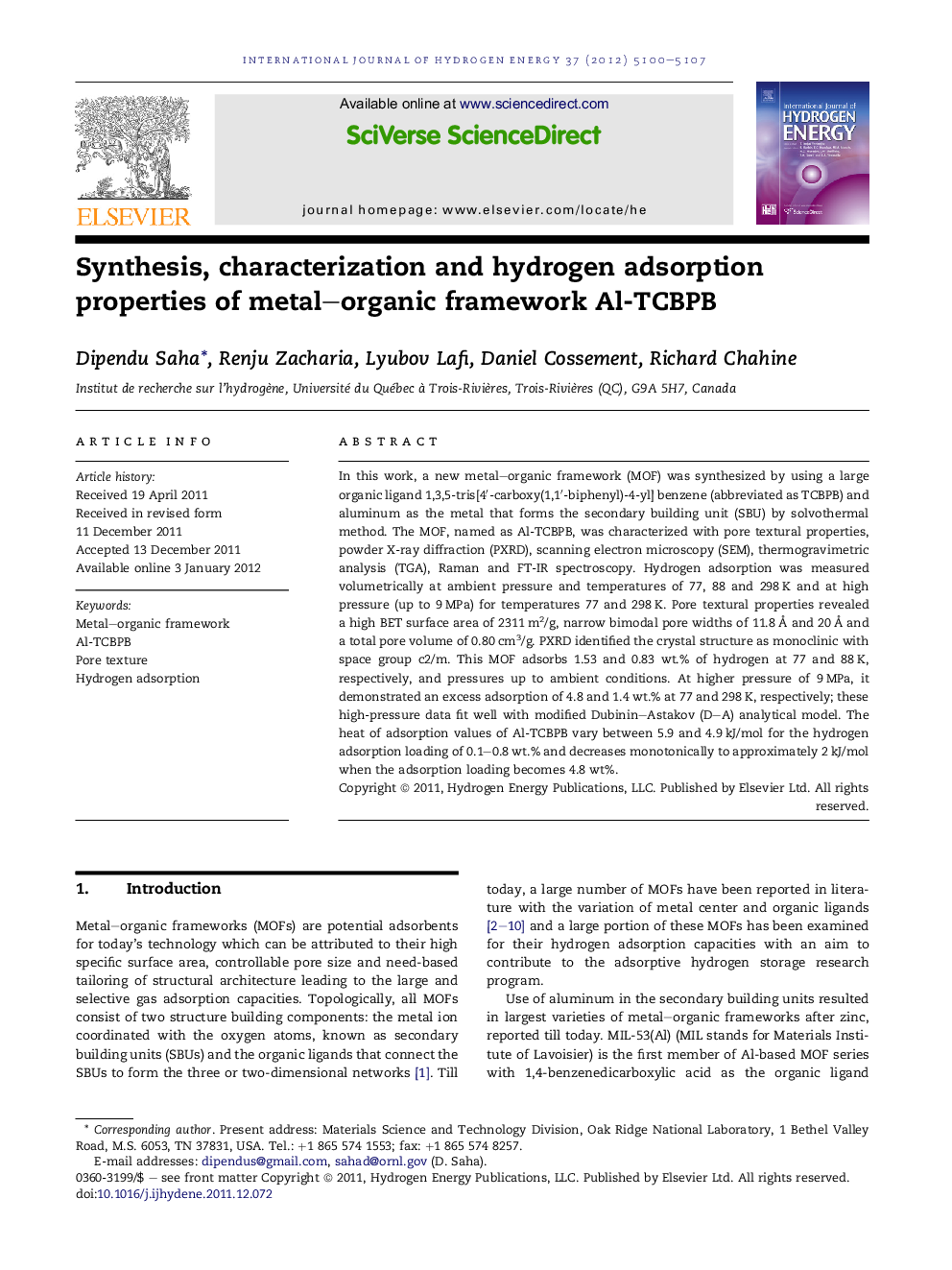| کد مقاله | کد نشریه | سال انتشار | مقاله انگلیسی | نسخه تمام متن |
|---|---|---|---|---|
| 1271528 | 1497563 | 2012 | 8 صفحه PDF | دانلود رایگان |

In this work, a new metal–organic framework (MOF) was synthesized by using a large organic ligand 1,3,5-tris[4′-carboxy(1,1′-biphenyl)-4-yl] benzene (abbreviated as TCBPB) and aluminum as the metal that forms the secondary building unit (SBU) by solvothermal method. The MOF, named as Al-TCBPB, was characterized with pore textural properties, powder X-ray diffraction (PXRD), scanning electron microscopy (SEM), thermogravimetric analysis (TGA), Raman and FT-IR spectroscopy. Hydrogen adsorption was measured volumetrically at ambient pressure and temperatures of 77, 88 and 298 K and at high pressure (up to 9 MPa) for temperatures 77 and 298 K. Pore textural properties revealed a high BET surface area of 2311 m2/g, narrow bimodal pore widths of 11.8 Å and 20 Å and a total pore volume of 0.80 cm3/g. PXRD identified the crystal structure as monoclinic with space group c2/m. This MOF adsorbs 1.53 and 0.83 wt.% of hydrogen at 77 and 88 K, respectively, and pressures up to ambient conditions. At higher pressure of 9 MPa, it demonstrated an excess adsorption of 4.8 and 1.4 wt.% at 77 and 298 K, respectively; these high-pressure data fit well with modified Dubinin–Astakov (D–A) analytical model. The heat of adsorption values of Al-TCBPB vary between 5.9 and 4.9 kJ/mol for the hydrogen adsorption loading of 0.1–0.8 wt.% and decreases monotonically to approximately 2 kJ/mol when the adsorption loading becomes 4.8 wt%.
► We synthesized new metal–organic framework, Al-TCBPB by incorporating large organic ligand TCBPB with Al.
► It has high BET specific surface area of 2311 m2/g and pore volume 0.8 cm3/g.
► It demonstrated an excess hydrogen adsorption of 4.8 and 1.4 wt.% at 9 MPa and 77 and 298 K, respectively.
Journal: International Journal of Hydrogen Energy - Volume 37, Issue 6, March 2012, Pages 5100–5107